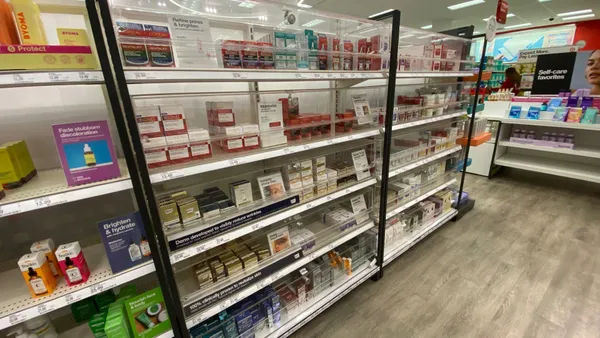The following is a guest post by Sam Kliger, CEO of KWI. Views are the author's own.
Amazon started as a platform that would democratize the industry by being a somewhat impartial brand retailer. Now it's morphed into becoming a direct competitor with the brands it sells.
The New York Times recently reported that Amazon has quietly been building out its private label brands, now with about 100 brands ranging from office supplies (AmazonBasics) to men's underwear (Good Brief) and kids clothing (Spotted Zebra). Couple this with the news that Amazon has grown to be the fourth largest advertiser in the U.S. in 2017, spending an estimated $3.4 billion on U.S. advertising and promotions, up from the number eight position in 2016, and it's bound to leave some specialty fashion retailers feeling a bit nervous.
How can brands with their own identity compete with the growing Amazon empire? First, don't hide in the corner. Now is the time for specialty retailers to double down on the one thing that fashion retailers can offer that Amazon cannot yet compete with — the experience. Brick-and-mortar retailers have a real opportunity to stand apart right now by being the anti-Amazon. While they may not be able to compete on price, they can win on taking the brand equity they have earned and creating a unique, yet easy, satisfying experience for shoppers.
But how you define the experience can vary from brand to brand. At its most basic level, a fashion retailer should be training and growing a talented sales force that can put together an outfit based on customer preference, style, body type and price. It's a formula that works: Many e-commerce brands like Revolve.com and Net-A-Porter rely on social media influencers to put together an outfit and drive people to their sites and raise brand awareness. As reported in WWD, four out of every five of Nordstroms.com's mobile web visits coming from referral traffic were driven by influencers.
Brick-and-mortar stores should easily be able to replicate this and instead of relying on influencers that live on a screen, have a face-to-face interaction with the sales staff that can create the same experience in person. Think about it: If a salesperson encourages a customer to try something on that she thinks is perfect and it is, you've created a new level of satisfaction.
Once the connection is made with the sales staff, your technology needs to make the experience seamless, easy and pleasant. No wait lines, easy exchanges or size look ups, shipping direct to the customer and being able to access a customer's purchase history are all tools that enhance the overall experience. Brick-and-mortar stores should also be able to tap into data to create a seamless experience. When your POS, merchandising, website and inventory system are all connected — or even better are one single system — sales staff will be able to quickly look up your shopping profile, see what is available in your size or in different locations and make suggestions based on previous purchases. When it's done with a smile and personal connection, you will keep shoppers coming back again.
Brands that do clienteling well give their sales associates the power to make a connection with the customer and use technology to make the experience even better, which can mean the difference between browsing and buying. Now is the time for fashion retailers to reinvigorate their focus on personal service and experience. Because building that one-on-one, trusted relationship is something that can never be replicated on Amazon.













